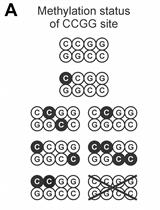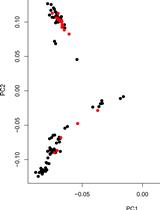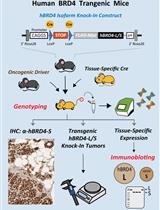- EN - English
- CN - 中文
Using indCAPS to Detect CRISPR/Cas9 Induced Mutations
利用indCAPS检测CRISPR/Cas9诱导的突变
发布: 2019年09月20日第9卷第18期 DOI: 10.21769/BioProtoc.3374 浏览次数: 4088
评审: Rainer MelzerMarcelo Santos da SilvaAyush Ranawade
Abstract
Cleaved amplified polymorphic sequences (CAPS) assays are useful tools for detecting small mutations such as single nucleotide polymorphisms (SNPs) or insertion/deletions (indels) present in an amplified DNA fragment. A mutation that disrupts or creates a restriction site will prevent cleavage by a restriction enzyme, allowing discrimination of wild-type and mutant alleles. In cases where no convenient restriction site is present, a derived Cleaved Amplified Polymorphic Sequence (dCAPS) assay can be used, where mismatches in the primer are used to create a diagnostic restriction site. No special design constraints are present for a CAPS assay, but cases where CAPS assays can be used are infrequent. A dCAPS assay can be burdensome to design by hand, but it is more broadly applicable. This protocol will describe the use of the indCAPS tool for the design of CAPS and dCAPS primers. The indCAPS tool was designed to be compatible with indel alleles, which prior tools struggled with but have increased importance since the rise of CRISPR/Cas9 mutagenesis methods.
Keywords: CRISPR (CRISPR)Background
Detecting mutations in biological samples is a common task in biological research. This is often performed using polymerase chain reaction (PCR) assays, where a sample’s genotype at one locus is determined by examining the size or sequence of amplified DNA. This protocol is a practical guide to using the indCAPS tool (Hodgens et al., 2017) available at http://indcaps.kieber.cloudapps.unc.edu/ to generate primers for PCR-based genotyping tasks. The indCAPS tool relies on a pair of techniques known as Cleaved Amplified Polymorphic Sequences (CAPS) and derived CAPS (dCAPS) (Neff et al., 1998), in which the genotype of a biological sample is determined by amplifying a region of DNA and assaying a diagnostic restriction site with a restriction enzyme. In a CAPS assay, the mutation of interest disrupts a known restriction site or creates a restriction site where one did not exist. In a dCAPS assay, a diagnostic site is created by introducing an intentional mismatch to one of the primers used to amplify the DNA, creating a restriction site in one genotype but not the other. Tools for generating primers for CAPS and dCAPS assays have been developed (Neff et al., 1998 and 2002) but are not compatible with insertion/deletion (indel) alleles such as those commonly acquired through CRISPR/Cas9 mutagenesis (Hodgens et al., 2017). With the recent rise of indel alleles in the literature due to CRISPR/Cas9 mutagenesis, a tool capable of generating dCAPS primers for indel alleles would make genotyping tasks easier. The indCAPS tool was developed to provide a tool for generating CAPS and dCAPS primers compatible with indels (Hodgens et al., 2017) and is intended to be easy to use and interpret for biologists designing genotyping assays. This protocol will describe the use of the indCAPS website for generating primers for genotyping a known polymorphism as well as detecting a novel mutation in a CRISPR/Cas9 mutagenesis experiment.
Equipment
- Computer
A computer capable of accessing the web. Desktops or laptops may be preferable to aid copying and pasting long DNA sequences. Tested on Windows and Mac computers. Linux computers should be compatible as well.
Software
- indCAPS tool (http://indcaps.kieber.cloudapps.unc.edu/)
Procedure
文章信息
版权信息
© 2019 The Authors; exclusive licensee Bio-protocol LLC.
如何引用
Hodgens, C., Nimchuk, Z. L. and Kieber, J. J. (2019). Using indCAPS to Detect CRISPR/Cas9 Induced Mutations. Bio-protocol 9(18): e3374. DOI: 10.21769/BioProtoc.3374.
分类
分子生物学 > DNA > 基因分型
您对这篇实验方法有问题吗?
在此处发布您的问题,我们将邀请本文作者来回答。同时,我们会将您的问题发布到Bio-protocol Exchange,以便寻求社区成员的帮助。
提问指南
+ 问题描述
写下详细的问题描述,包括所有有助于他人回答您问题的信息(例如实验过程、条件和相关图像等)。
Share
Bluesky
X
Copy link












